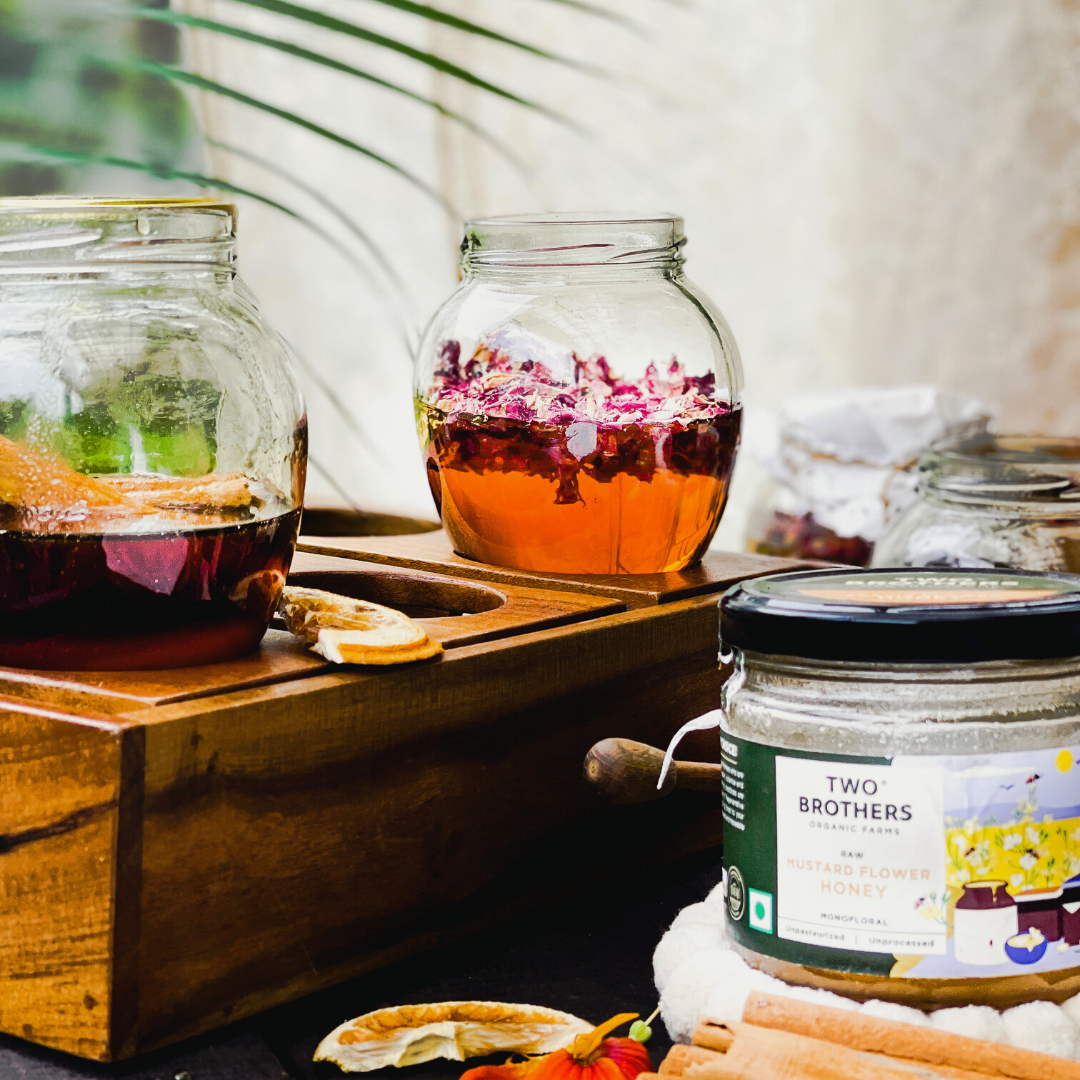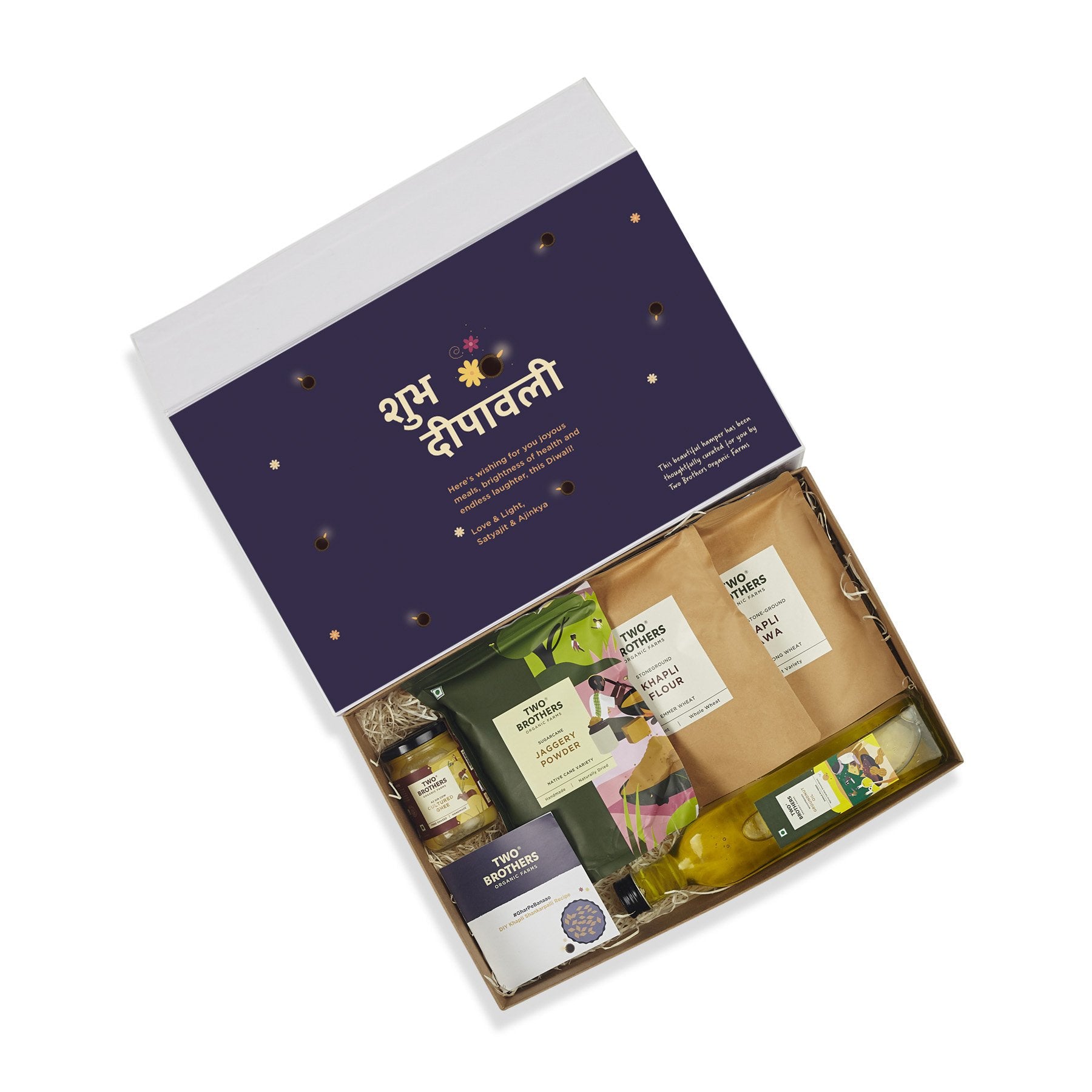A few days ago we came upon a recipe post for a ghee crust shared by a blogger living in America. We couldn’t help but smile while also feeling amazed that Indian ghee and its benefits were being researched and understood by foodies from other countries and cultures.
Desi ghee, produced from the milk of native cows, is high in protein, probiotics and is documented as being a healthy fat. Native cow breeds are many in number, the Gir, Sahiwal, Red Sindhi being the more popular among milch cows. When they are reared as domestic pets with care and allowed to free graze, the diet is rich in rain fed grass as well as indigenous grasses and cereals like organically grown maize, jowar, corn and khapli.

The ghee made from the milk of these free range cows is what our ancestors relied on for cooking and also as therapy for all-round wellness. In addition to the kind of milk which is used to make the Indian ghee, the manner in which the ghee is made is also something which is a vital part of understanding the benefits of consuming ghee.
Making ghee in the traditional manner is referred to as the Vedic bilona method. Milk is first fermented to make curd. Then the cream from the curd is set aside to make butter by hand churning. This white butter or Makkhan is also easily digestible because it is made from the cream of the fermented curd and not fresh cream malai.

The process of melting the butter to ghee is done at dawn, according to the lunar calendar on full moon. Check out this video for watching the full process of making Cultured Ghee at the Two Brothers Organic Farms. The addition of native herbs like moringa leaves or curry leaves, or even herbs while making the ghee, adds to the aroma and nutritional benefits .
When ghee is made using this process, it is understandable why it is made in small batches and also costs a certain sum of money. There is a lot of food wisdom, time and labour which goes into making this cultured desi ghee. The A2 milk is also in limited supply because the cows are not coerced into producing more than their natural capabilities.

If we refer back to Ayurvedic texts and ancient medicinal journals written in Sanskrit, ghee would be often mentioned as a treatment not only for internal use but also externally.
Did you see the video which actress Yami Gautham had shared during the pandemic? She shared her experience of making ghee kajal, on her Instagram page. Memories of her nani making home made kajal was part of the post she shared. Kajal or kohl made out of A2 ghee is cooling for the eyes and also clears the salt deposits left over from dried tears. It also cools and removes any residue in the tear ducts. It’s incredible to keep learning about the hidden theories behind daily practices. Everything was made at home, using the simplest of ingredients. How did we end up where we are today?? Searching for the best cosmetic brands for organic make up which won’t affect our skin. Making ghee kajal is not time consuming nor is it difficult.
Pollution is a word we use in our daily vocabulary almost because it has crept into every layer of the atmosphere we live in. The ill effects are felt in the way our bodies respond to the toxicity in the air. A simple nasya has been proven to have long term benefits in respiratory health. All we need is a finger moisturizing quantity of desi ghee and smear it well on the inside of both nostrils. This keeps pollutants and irritants from being absorbed through the nasal passage and keeps the lungs in good condition.

If we were born into a large Indian household of indulgent grandparents, doting aunts, uncles and boisterous cousins then it is most likely that we would have experienced the benefits of a ghee massage when still in the cradle. A desi ghee abhyanga for a baby, whether it is winter or summer is believed to be cleansing and keeps the skin free from maladies. A newborn responds to a loving touch. The properties of traditional Indian ghee is easily absorbed into the Indian baby’s skin and makes it much easier later on to add to the weaning diet. The act of gently pulling and kneading the tiny limbs and trunk helps to keep the baby calm and releases happy endorphins for deep sleep.
When it comes to cooking, the cuisine from all parts of India is united when it comes to including ghee in the food. The process of a sizzling tadka into cooked dal, a generous slather on a hot paratha, a drizzle maybe even a dollop on top of steaming, fluffy idlis - this is what ghee dreams are made of!!

When entering a south Indian diner, a prominent time on the menu is a ghee roast (dosa). If there are days when the lunch menu at home is “boring”, what comes to the rescue is, you guessed it, ghee rice! Hot grains of rice are coated with fragrant ghee, salt is added and mashed into a delicious union. The extravagant cravings include a papad or some other crunch element on the side but if not, the rice, ghee and salt are on the same level of a ‘died and gone to heaven’ experience as a gastronomic meal.

The festival of Deepavali is incomplete without the clay lamps which are festooned inside and outside the home. Before the whole rows of lamps are lit, a special Lakshmi ghee lamp is lit in the puja room. Ghee signifies purity and positivity. The lighting of ghee lamps everyday and during Lakshmi puja is regarded as an auspicious start to the day and spreads positive vibrations for success and prosperity.
Having spent the ‘90s running away from ghee towards using fancy oils which were published in Western nutrition magazines, the past few years have seen a 360 degree shift of people going back to embracing the benefits of ghee. It was a change that was imminent. It’s again the old story of thinking that the grass is greener on the opposite side. One goes on a roundabout journey only to end up back to one's roots.
The key to gut health, glowing skin , flexible limbs, healthy vision, lung function and mental agility lies, without a doubt, in the understanding of what this golden liquid is capable of. The wisdom lies in also knowing that when it comes to the authentic desi ghee, the value of the product is far greater than its price tag. Our immune system’s greatest weapon lies in the intake of A2 ghee. The ghee mantra is only gaining in volume and will not be silenced henceforth.
Links for reference










